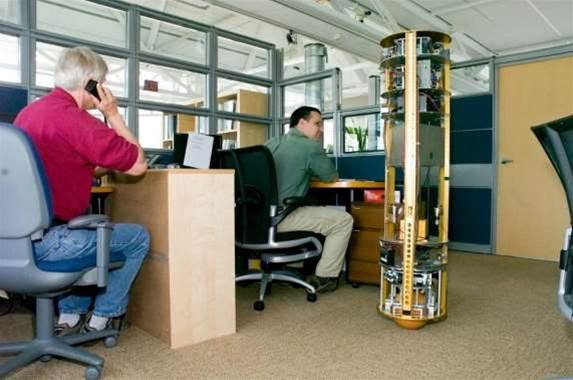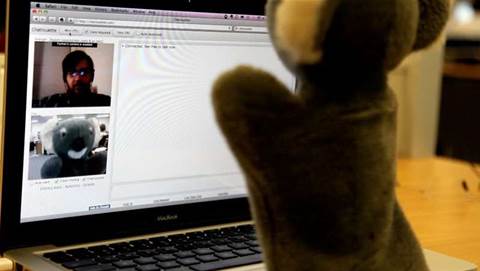
Developed by researchers at Carnegie Mellon University, 'Ballbot' is described as a "self-contained, battery-operated omnidirectional robot that balances dynamically on a single urethane-coated metal sphere".
The device weighs 43kg and is approximately the same height and width as a human.
According to its creators, Ballbot has the potential to function better than current robots in environments with people because of its long thin shape and ability to manoeuvre in tight spaces.
Ballbot's creator, robotics research professor Ralph Hollis, explained that the robot began life as a concept in his home workshop, but has been funded for the past two years with grants from the National Science Foundation.
Professor Hollis aims to prove that dynamically stable robots like Ballbot can outperform their static counterparts.
Traditional statically stable mobile robots have three or more wheels for support, but their bases are generally too wide to move easily among people and furniture. They can also tip over if they move too fast or operate on a slope.
"We wanted to create a robot that can manoeuvre easily and is tall enough to look you in the eye," said Professor Hollis.
"Ballbot is tall and skinny, with a much higher centre of gravity than traditional wheeled robots. Because it is omnidirectional, it can move easily in any direction without having to turn first."
Ballbot has an onboard computer that reads balance information from its internal sensors, activating rollers that mobilise the ball on which it moves. The system is essentially an inverse mouse-ball drive.
Hollis and his team, including Carnegie Mellon Robotics Institute project scientist George Kantor and graduate students Tom Lauwers, Anish Mampetta and Eric Schearer, have demonstrated Ballbot moving on carpeted surfaces.
"We want to make Ballbot much faster, more dynamic and graceful," he said. " But there are many hurdles to overcome, like responding to unplanned contact with its surroundings, planning motion in cluttered spaces and safety issues."
Future plans for Ballbot include adding a head and a pair of arms. Swinging the arms, said Hollis, would help to rotate and balance the body.



.png&h=140&w=231&c=1&s=0)
_(20).jpg&h=140&w=231&c=1&s=0)





 iTnews Executive Retreat - Security Leaders Edition
iTnews Executive Retreat - Security Leaders Edition











_(1).jpg&h=140&w=231&c=1&s=0)



